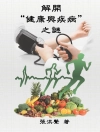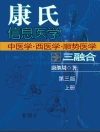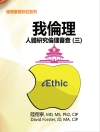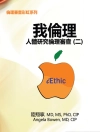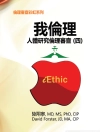Anatomy and Physiology in Healthcare focuses on what healthcare students need to know about the biological principles which underpin the practice of healthcare.
All healthcare students have to study anatomy and physiology. They often find it a challenging subject and struggle to see how the subject will link to their professional practice.
This book is unique in that
it integrates clinical cases with the essential biological facts to provide all students with a thorough understanding of how anatomy and physiology can be applied in healthcare.
- By using clinical cases throughout , the book helps the reader grasp the practical relevance of anatomy and physiology to decision-making and care delivery.
- The clinical cases have been carefully selected to reflect common conditions encountered in practice today, and the changing patterns of disease and healthcare.
- Clear high-quality full colour illustrations, links to appropriate web-based content, and self-assessment material make this the perfect, practical textbook for all healthcare students.
Review:
‘This textbook presents anatomy and physiology in a fun and interactive way…. It is divided into 14 chapters and the way the authors have introduced the information gives it a modern twist. For example, instead of titling a chapter ‘The reproductive system’, it is called ‘From one generation to the next’. ….. What works particularly well is the way the authors have used case studies that reflect the reality of the changing patterns of health and disease…. This book provides a good foundation in clinical application and it seeks to link theory to practice.’;
Nursing Standard, 27 September 2017, volume 32 number 5
Daftar Isi
Chapter 1. Why is the human body the way it is?
1.1 Introduction and clinical relevance
1.2 What you need to know – essential anatomy and physiology
1.2.1 Why the human body is the way it is
1.2.2 Single-celled and multicellular organisms
1.2.3 Homeostasis and homeodynamics
1.2.4 The internal environment and plasma
1.2.5 The homeodynamic process
1.2.6 The homeodynamic regulation of body temperature
1.3 Clinical application
1.4 Anatomical language
1.4.1 General anatomical terms
1.4.2 Body cavities
1.4.3 Body regions
1.5 Summary
1.6 Further reading
1.7 Self-assessment questions
Chapter 2. Cells and their environment
2.1 Introduction and clinical relevance
2.2 What you need to know – essential anatomy and physiology
2.2.1 Types of cell: the diversity of life
2.2.2 Components of a eukaryotic cell
2.2.3 Organization of cells in the body
2.3 Clinical application
2.4 Summary
2.5 Further reading
2.6 Self-assessment questions
Chapter 3. Genetics: how cells divide and introduce variation
3.1 Introduction and clinical relevance
3.2 What you need to know – essential anatomy and physiology
3.2.1 The genome
3.2.2 Chromosomes
3.2.3 Cell division
3.2.4 Application of genetics to healthcare
3.3 Clinical application
3.4 Summary
3.5 Further reading
3.6 Self-assessment questions
Chapter 4. Communication: short and fast
4.1 Introduction and clinical relevance
4.2 What you need to know – essential anatomy and physiology
4.2.1 Characteristics of a biological communication system
4.2.2 The nervous system: structural organization
4.2.3 Nervous tissue
4.2.4 Functional organization of the nervous system
4.2.5 The generation and propagation of an action potential
4.2.6 The central nervous system: the brain and spinal cord
4.2.7 Neuronal pathways and tracts of the brain and spinal cord
4.2.8 Protection and nourishment of the brain and spinal cord
4.2.9 The peripheral nervous system (cranial nerves and spinal nerves)
4.2.10 The autonomic nervous system
4.3 Clinical application
4.4 Summary
4.5 Further reading
4.6 Self-assessment questions
Chapter 5. Communication: long and slow
5.1 Introduction and clinical relevance
5.2 What you need to know – essential anatomy and physiology
5.2.1 The endocrine system
5.2.2 Protein hormones
5.2.3 Lipid-derivative hormones
5.2.4 How hormones exert an effect
5.2.5 Major endocrine glands and tissues
5.3 Clinical application
5.4 Summary
5.5 Further reading
5.6 Self-assessment questions
Chapter 6. How the external environment is interpreted
6.1 Introduction and clinical relevance
6.2 What you need to know – essential anatomy and physiology
6.2.1 Sensation and perception
6.2.2 Vision and the eye
6.2.3 Taste and smell
6.2.4 Hearing
6.2.5 Touch
6.3 Clinical application
6.4 Summary
6.5 Further reading
6.6 Self-assessment questions
Chapter 7. Why food is needed: the chemical basis of health
7.1 Introduction and clinical relevance
7.2 What you need to know – essential anatomy and physiology
7.2.1 The driving force behind cellular processes and activities
7.2.2 Components of food
7.2.3 Making nutrients in food available
7.3 Clinical application
7.4 Summary
7.5 Further reading
7.6 Self-assessment questions
Chapter 8. The importance of water and electrolytes
8.1 Introduction and clinical relevance
8.2 What you need to know – essential anatomy and physiology
8.2.1 Water and electrolytes
8.2.2 Functions of the kidney
8.3 Clinical application
8.4 Summary
8.5 Further reading
8.6 Self-assessment questions
Chapter 9. Organs need to be perfused
9.1 Introduction and clinical relevance
9.2 What you need to know – essential anatomy and physiology
9.2.1 Structure and function of blood vessels
9.2.2 Blood flow and perfusion
9.2.3 The heart: structure and function
9.2.4 Blood pressure
9.2.5 Blood composition and function
9.3 Clinical application
9.4 Summary
9.5 Further reading
9.6 Self-assessment questions
Chapter 10. The body needs oxygen
10.1 Introduction and clinical relevance
10.2 What you need to know – essential anatomy and physiology
10.2.1 Upper respiratory tract
10.2.2 Lower respiratory tract
10.2.3 Lung tissue and the bronchial tree
10.2.4 Ventilation and the mechanics of breathing
10.2.5 Respiratory volumes and capacities
10.2.6 Exchange and transportation of gases
10.2.7 Regulation of breathing by chemoreceptors
10.3 Clinical application
10.4 Summary
10.5 Further reading
10.6 Self-assessment questions
Chapter 11. Protection from harm
11.1 Introduction and clinical relevance
11.2 What you need to know – essential anatomy and physiology
11.2.1 Lymphatic structures support immunity
11.2.2 Innate immunity – physical defences
11.2.3 Recognition of microorganisms by innate immunity
11.2.4 Innate immunity – cellular defences
11.2.5 Innate immunity – humoral defences
11.2.6 Acute inflammation
11.2.7 Adaptive immunity
11.3 Clinical application
11.4 Summary
11.5 Further reading
11.6 Self-assessment questions
Chapter 12. Skin: our protective cover
12.1 Introduction and clinical relevance
12.2 What you need to know – essential anatomy and physiology
12.2.1 Structure of the skin
12.2.2 Factors affecting the skin
12.2.3 Wound healing
12.3 Clinical application
12.4 Summary
12.5 Further reading
12.6 Self-assessment questions
Chapter 13. Achieving movement
13.1 Introduction and clinical relevance
13.2 What you need to know – essential anatomy and physiology
13.2.1 Bones
13.2.2 The joints
13.2.3 Muscles
13.3 Clinical application
13.4 Summary
13.5 Further reading
13.6 Self-assessment questions
Chapter 14. From one generation to the next
14.1 Introduction and clinical relevance
14.2 What you need to know – essential anatomy and physiology
14.2.1 Structure and function of the male reproductive system
14.2.3 Structure and function of the female reproductive system
14.3 Clinical application
14.4 Summary
14.5 Further reading
14.6 Self-assessment questions


